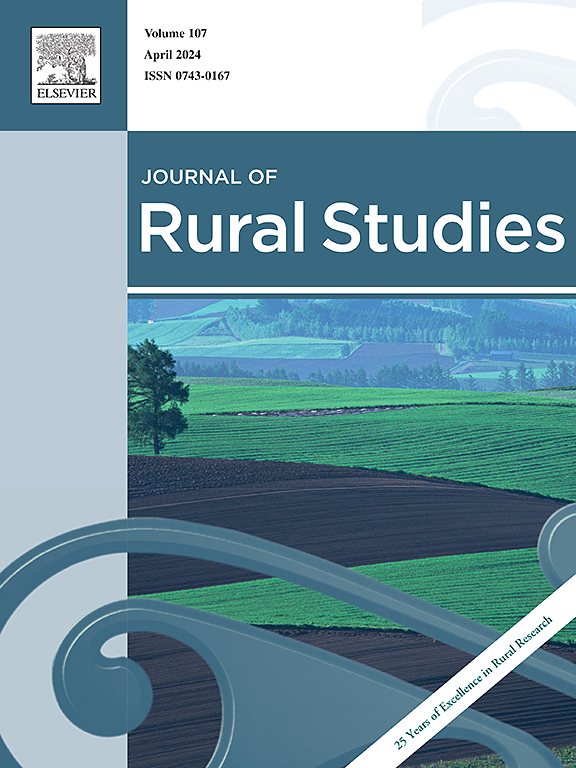Integrating human mobility and rural multifunction to identify village types in metropolitan suburbanization
IF 5.1
1区 社会学
Q1 GEOGRAPHY
引用次数: 0
Abstract
Increasing human mobility during metropolitan suburbanization drives rapid functional transitions in rural areas. However, the interactions between human mobility and rural function has been challenging due to the scarcity of real-life mobility data. Leveraging mobile phone data capturing 50.26 million real-world exposures among 1.24 million people in Wuhan, China, we investigated the human mobility network and evaluated the multifunctional development levels across 1559 villages. We constructed a multifunctional index system spanning five dimensions: residential life, agricultural production, non-agricultural production, ecological security, and leisure culture. A Spatial Toeplitz Inverse Covariance-Based Clustering (STICC) algorithm was then proposed to identify village types by integrating mobility patterns and multifunctionality. Our analysis reveals that while Wuhan's rural areas remain predominantly monofunctional, high-frequency mobility drives evident multifunctional transformation. Population density, network centrality, and urban-rural connectivity all show significant positive correlations with residential life, non-agricultural production, and leisure-cultural functions, while exhibiting consistent negative correlations with ecological conservation. The STICC algorithm successfully delineated five distinct village types, enabling targeted optimization pathways. These findings provide a novel framework for deciphering mobility-function interdependence and advancing precision governance in metropolitan suburbanization.
整合人的流动性与乡村的多功能,识别都市郊区化中的乡村类型
都市郊区化过程中人口流动性的增加推动了农村地区快速的功能转型。然而,由于现实生活中流动性数据的缺乏,人类流动性与农村功能之间的相互作用一直具有挑战性。利用武汉124万人的5026万次真实暴露的手机数据,研究了武汉市1559个村庄的人口流动网络,并评估了多功能发展水平。构建了涵盖居住生活、农业生产、非农业生产、生态安全、休闲文化五个维度的多功能指标体系。在此基础上,提出了基于空间Toeplitz逆协方差聚类(STICC)算法,通过整合迁移模式和多功能性来识别村庄类型。我们的分析表明,虽然武汉农村地区仍以单一功能为主,但高频流动性推动了明显的多功能转型。人口密度、网络中心性和城乡连通性与居住生活、非农生产和休闲文化功能呈显著正相关,与生态保护呈持续负相关。STICC算法成功地描绘了五种不同的村庄类型,实现了有针对性的优化路径。这些发现为解读大都市郊区化中流动性-功能相互依存关系和推进精准治理提供了一个新的框架。
本文章由计算机程序翻译,如有差异,请以英文原文为准。
求助全文
约1分钟内获得全文
求助全文
来源期刊

Journal of Rural Studies
Multiple-
CiteScore
9.80
自引率
9.80%
发文量
286
期刊介绍:
The Journal of Rural Studies publishes research articles relating to such rural issues as society, demography, housing, employment, transport, services, land-use, recreation, agriculture and conservation. The focus is on those areas encompassing extensive land-use, with small-scale and diffuse settlement patterns and communities linked into the surrounding landscape and milieux. Particular emphasis will be given to aspects of planning policy and management. The journal is international and interdisciplinary in scope and content.
 求助内容:
求助内容: 应助结果提醒方式:
应助结果提醒方式:


